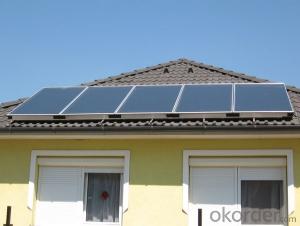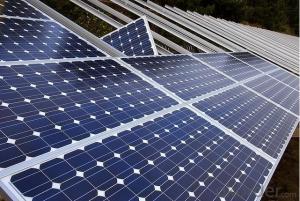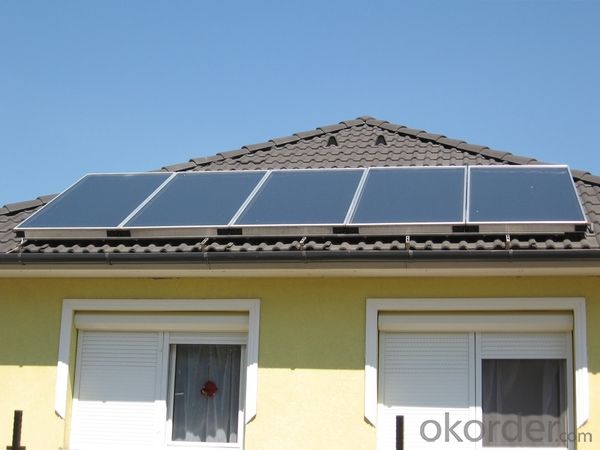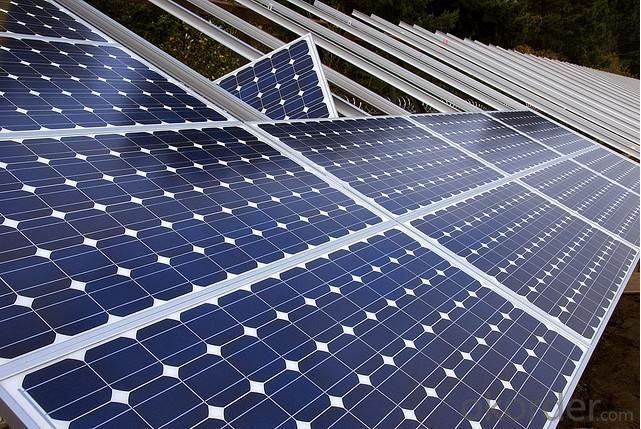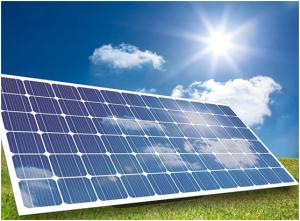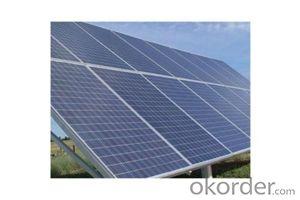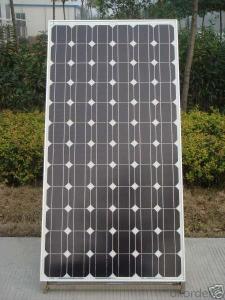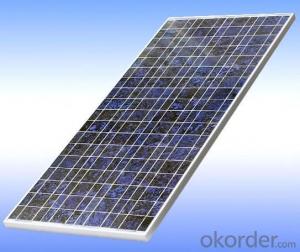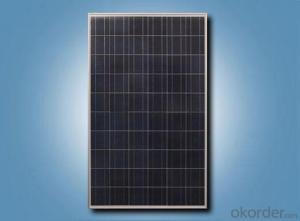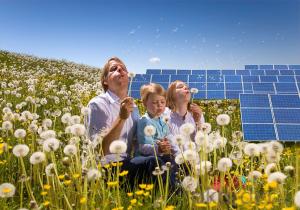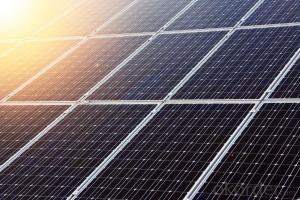High Efficiency 310W Poly Solar Module - Solar Panels Jacksonville FL
- Loading Port:
- Tianjin
- Payment Terms:
- TT OR LC
- Min Order Qty:
- 1 watt
- Supply Capability:
- 100000 watt/month
OKorder Service Pledge
OKorder Financial Service
You Might Also Like
Specification
Product Description:
1.Structure of Solar Module Description
CNBM Solar's photovoltaic module is designed for designed for large electrical power requirement. It is the optimal choice for both on-grid and off-grid power systems. CNBM Solar offers high performance of power per square foot of solar array.
2.Main Features of the Solar Module
Solar Cell: High efficency crystalline solar cell. Even if under the weak light, the solar module can produce maximum power output.
Tempered glass: Anti-reflecting coating and high transmission rate glass increase the power output and mechanical strength of solar module.
EVA and TPT: Using high quality EVA and TPT to prevent destroying and water.
Strong aluminum frames to strengthen the load hold and to stand against high wind.
Junction box: Multi function junction box with water proof.
Long lifetime: ≥25 years; Less power decrease.
Good performance of preventing from atrocious weather such as wind and hails.
Resisting moisture and etching effectively, not effected by geology.
The certificate issued by international authority: UL, TUV, IEC, VDE, CE.
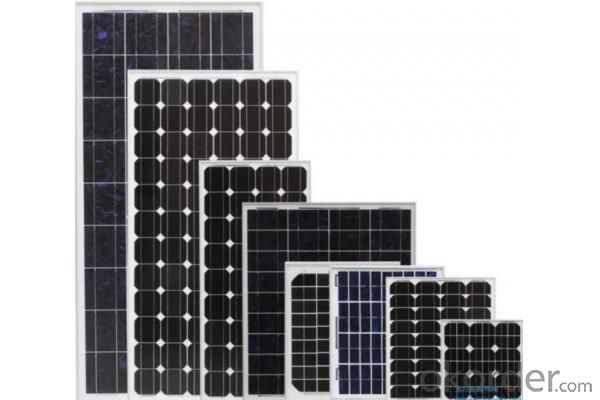
Solar panel working process
In addition to being the ultimate source of all life on earth, the sun is an infinitely renewable, completely pollution-free source of electricity. Instead of burning fossil fuels dug up from the ground in a big power plant – a very 19th century, industrial age approach, when you think about it – solar panels convert sunlight directly into electricity, with no harmful emissions.
The basic unit of a solar panel is a solar cell, which usually consists of one or two layers of silicon-based semiconductor wafers. When struck by the photons in sunlight, the solar cell generates an electrical charge due to the "photovoltaic effect" – which is a pretty good name, since it produces voltage from photons. The flow of these electrons moves in a steady electrical current from one side of the cell to the other.
Dozens of these PV cells are packaged together into solar modules, which in turn are packaged into solar panels that are mounted on a rooftop and arranged to maximize their hours of exposure to direct sunlight. Because the electricity generated by all those solar cells is direct current (DC), it is then sent to an inverter that transforms the power into the same alternating current (AC) used by the appliances in your home and the local utility electricity distribution grid. Increasingly, these inverters are getting "smart," providing data monitoring for solar installation performance and other grid integration services.
- Q: Can solar panels be installed in a desert environment?
- Yes, solar panels can be installed in a desert environment. In fact, deserts are often ideal for solar panel installations due to their high levels of sunlight and minimal cloud cover. The dry climate also helps to minimize dust buildup on the panels, making maintenance easier.
- Q: If you were to shine, for example, heat lamps onto the solar panel along with the sun, will the solar panel eventually not work? Or will they produce more light as long as more light is directed onto them.
- Solar panels have a upper temperature limit, and it's only a bit more than it would reach in a very bright sunny day near the equator. Start shining heat lamps on it and you will raise it past it's max temperature, and it will die. .
- Q: Can solar panels be used in areas with high levels of snowfall?
- Yes, solar panels can still be used in areas with high levels of snowfall. While snow accumulation on the panels can temporarily reduce their efficiency, modern solar panel designs and technologies have improved to withstand heavy snow loads. Additionally, the angle at which solar panels are installed and their smooth surface can help snow easily slide off, allowing them to continue generating electricity even in snowy conditions.
- Q: How do solar panels connect to the electrical grid?
- Solar panels connect to the electrical grid through an inverter, which converts the direct current (DC) generated by the panels into alternating current (AC) that is compatible with the grid. This AC power is then fed into the main electrical panel of the building and can be used to power appliances and devices. If the solar panels generate excess electricity, it can be sent back to the grid, and if there is a shortfall, electricity can be drawn from the grid to meet the demand.
- Q: I was trying to look online for solar panels for my home to take some of the strain off of using oil and electricity but I find it very hard to understand exactly how they are used.Like one that I looked up is 00 watts.....is that like a light bulb watt? How many things can that power? Is it really cheaper in the long run because the panels are very expensive?If anyone has web sites that can explain this to me I would appreciate a link, or anyone to answer part of my question.
- I okorder Hope this helps.
- Q: Can solar panels be installed on backpacks or camping gear?
- Yes, solar panels can be installed on backpacks or camping gear. These portable solar panels are designed to be lightweight and flexible, making them suitable for outdoor activities. They can be used to charge small electronic devices like phones, tablets, or portable speakers while on the go, providing a convenient and sustainable power source.
- Q: How do solar panels affect the property's overall sustainability?
- Solar panels can significantly enhance a property's overall sustainability by harnessing renewable energy from the sun. They reduce dependence on fossil fuels, decrease carbon emissions, and contribute to energy independence. Additionally, solar panels can generate surplus electricity that can be sold back to the grid, further enhancing the property's sustainability and potentially providing financial benefits.
- Q: Can solar panels be used in remote areas with no access to the grid?
- Yes, solar panels can be used in remote areas with no access to the grid. Solar panels generate electricity from sunlight, making them an ideal solution for off-grid locations where traditional power infrastructure is unavailable. They can be installed in remote areas to provide a reliable and sustainable source of energy, allowing for essential power needs such as lighting, charging devices, and running small appliances even in areas far from the grid.
- Q: Can solar panels be installed on a high-rise building?
- Yes, solar panels can be installed on a high-rise building. In fact, high-rise buildings can be ideal locations for solar panel installation due to their height and large surface areas. By utilizing the available roof space, high-rise buildings can generate significant amounts of solar energy, helping to reduce their reliance on traditional energy sources and lowering their carbon footprint.
- Q: Can solar panels work at night?
- No, solar panels cannot work at night as they rely on sunlight to generate electricity.
Send your message to us
High Efficiency 310W Poly Solar Module - Solar Panels Jacksonville FL
- Loading Port:
- Tianjin
- Payment Terms:
- TT OR LC
- Min Order Qty:
- 1 watt
- Supply Capability:
- 100000 watt/month
OKorder Service Pledge
OKorder Financial Service
Similar products
Hot products
Hot Searches
Related keywords
